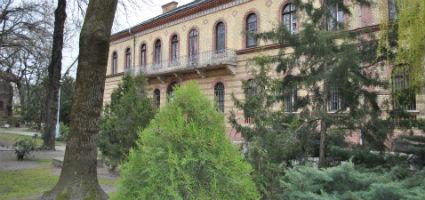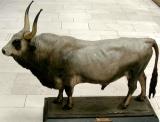2024. April 19. Friday
Collection of Veterinary History - Budapest
 |
Address: 1071, Budapest Bethlen Gábor utca 20-24. (megközelítés a portán keresztül)
Phone number: (1) 478-4226
E-mail: library@univet.hu
Opening hours: Mon-Thu 9-16
Researchers: Wed 13-16 You can also view a prior check-in at other times! |
The Collection of Veterinary History, established in 1980, belongs to the Veterinary Science Library, Szent István University. An organized file of relics of veterinary history was first established in 1937 and had its place in the central building. The storm of World War II. made a lot of damage to it, and spread a significant part of the fine collection. The permanent exhibition which can be seen today was opened in September 1984 in the modern building H of the Faculty of Veterinary Science.
The exhibition has three parts. The first nine showcases contain the instruments of veterinary practice and that of horse smiths and illustrate their development. This part covers about 200 years, up to the first third of the 20th century.
The second part of the collection deals with the history of the university and veterinary education, respectively. The exhibition presents the history of the university through the life works of some of its outstanding professors from the founder Sándor Tolnay to Gyula Magyary-Kossa.
The third part of the collection contains animal models of high artistic value created by the sculptor György Vastagh, Jr. originally for the purposes of demonstration at the end of the 19th century.
The Veterinary Science Library is also responsible for the operation of the faculty archives. A catalogue of this rich collection of resources is available for researchers as well as some compilations of the most significant items. The Magyary-Kossa Historic Veterinary Book Collection has invaluable items of veterinary history.
The exhibition has three parts. The first nine showcases contain the instruments of veterinary practice and that of horse smiths and illustrate their development. This part covers about 200 years, up to the first third of the 20th century.
The second part of the collection deals with the history of the university and veterinary education, respectively. The exhibition presents the history of the university through the life works of some of its outstanding professors from the founder Sándor Tolnay to Gyula Magyary-Kossa.
The third part of the collection contains animal models of high artistic value created by the sculptor György Vastagh, Jr. originally for the purposes of demonstration at the end of the 19th century.
The Veterinary Science Library is also responsible for the operation of the faculty archives. A catalogue of this rich collection of resources is available for researchers as well as some compilations of the most significant items. The Magyary-Kossa Historic Veterinary Book Collection has invaluable items of veterinary history.
